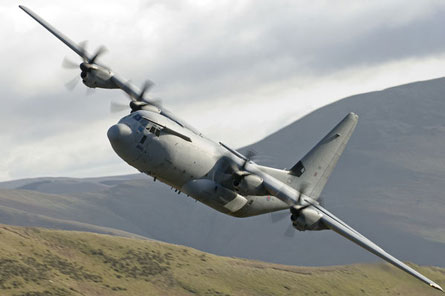The UK Ministry of Defence is seeking a new heavy airdrop capability in a move intended to boost the operational effectiveness of its Royal Air Force Lockheed Martin C-130Js and future Airbus Military A400Ms. Citing a need to replace 1950s technology originally developed for the Blackburn Beverley transport, the MoD has invited information on an “innovative solution” to enter service by April 2009.
Candidate systems should be capable of deploying a payload of up to 11,300kg (25,000lb) into drop zones at altitudes of up to 8,000ft (2,440m) above sea level, according to a requirements document issued by the UK Defence Equipment and Support organisation’s Hercules integrated project team on 22 August. This would mark a massive improvement over the C-130J’s current ability to drop individual loads of just 1t under such conditions.
 |
|---|
© Paul Dopson/AirTeamImages.com |
The MoD says the new airdrop system should be compatible with the C-130J’s and A400M’s common 2.7m (9ft)-wide cargo handling system, and be capable of carrying a range of vehicles and equipment. “We considered that merely making the 1950s system compatible with the C-130J and A400M was unlikely to minimise support costs,” it adds. Companies have until 9 October to express interest in the requirement, with formal invitations to tender for the deal – worth between £93,000 and £685,000 ($185,000 and $1.3 million) – to be concluded before year-end.
While the MoD says “the contract has not been raised to reduce the risk of future aircraft losses”, the ability to deploy heavy equipment from the air could bring the advantage of reducing reliance on tactical landing zones, such as those now used during operations in Afghanistan and Iraq. Two of the RAF’s C-130s have been destroyed on the ground in the countries since the second quarter of last year, with both having detonated anti-tank landmines placed on remote strips.
The air force, which now has a fleet of 24 C-130Js, expects its first A400Ms to meet an in-service date of 2011, with the type to replace its remaining C-130Ks.
Related stories:
Source: Flight International



















